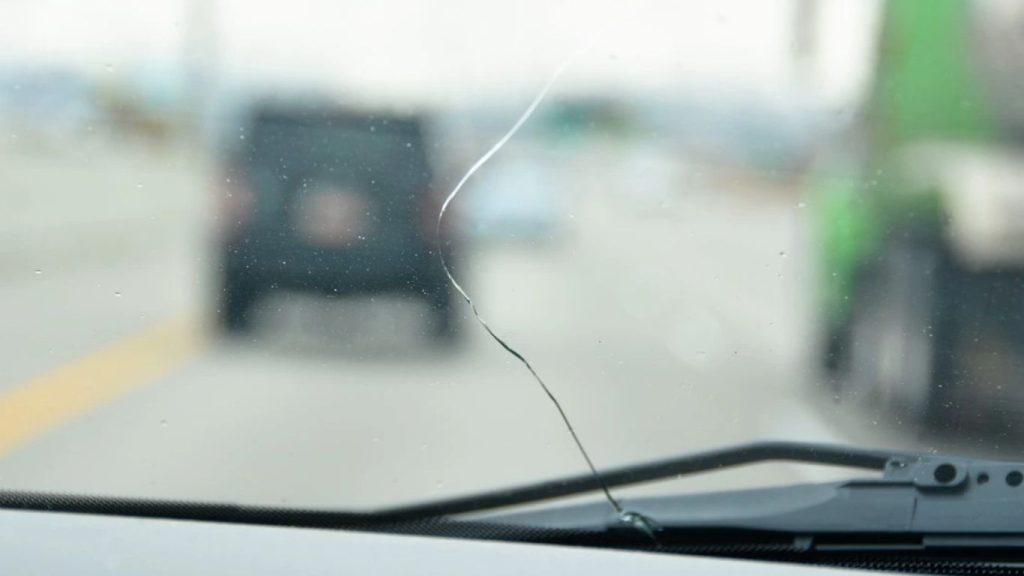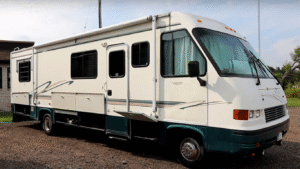Imagine this—you’re driving down the road, and suddenly, a small rock hits your windshield. At first, it’s just a tiny chip, barely noticeable. But within days, that tiny blemish starts creeping into a long crack. Before you know it, your windshield looks like a spiderweb, and you’re wondering if you need a full replacement.
Here’s the thing: a cracked windshield isn’t just an eyesore—it’s a safety risk. If not controlled, it can block your view, weaken your car’s structure, and even break under pressure. So, how do you stop a windshield crack from spreading before it turns into a costly repair?
The good news is, you have options. Whether you use a windshield repair kit or get professional help, acting quickly is important to prevent more damage. In this guide, we’ll break down the real, practical solutions—what works, what doesn’t, and when to call in the pros.
What Causes Windshield Cracks to Spread?
So, you’ve got a small crack on your windshield. No big deal, right? Just a tiny line—barely noticeable. But then, one morning, you hop into your car, and boom! That little crack has grown into a long, ugly streak across your windshield. What just happened?
Windshield cracks don’t just spread randomly—there are real reasons behind it. Understanding what causes them to grow can help you prevent further damage and avoid a costly windshield replacement.
1. Temperature Changes (The Glass Expands & Contracts)
Ever poured hot water on an icy windshield to defrost it? Big mistake! Sudden temperature changes put stress on the glass, making cracks spread faster.
- On a hot day, the glass expands, pushing the crack open.
- On a cold day, the glass contracts, causing the crack to squeeze and extend.
- If you switch from AC to heater quickly, you’re forcing the glass to adjust too fast, making the crack worse.
Pro Tip: Try to park in the shade or use a windshield sunshade to minimize temperature stress on the glass.
2. Driving Over Bumps & Potholes (Vibrations Weaken the Glass)
Your car might have strong suspension, but that tiny crack on your windshield? It’s not built to handle the pressure.
- Bumpy roads, potholes, or even slamming your car door can cause vibrations that force the crack to widen.
- The glass is already under stress, and these sudden jolts make things worse.
Pro Tip: Drive cautiously over rough roads and close your doors gently to avoid extra stress on the windshield.
3. Moisture & Dirt Getting Inside the Crack
Ever noticed how water expands when it freezes? If moisture seeps into the crack and the temperature drops, it can freeze, expand, and push the crack wider.
- Even in non-freezing conditions, dirt and debris can get into the crack, making repairs less effective.
- A dirty crack is harder to seal, so the damage keeps spreading.
Pro Tip: If you can’t fix the crack immediately, cover it with clear tape to prevent dirt and moisture from getting inside.
4. Windshield Wiper Pressure & Sunlight Exposure
- Old, rough windshield wipers apply pressure unevenly, aggravating cracks.
- Direct sunlight can weaken the laminated layer of glass, accelerating the spread of the crack.
Pro Tip: Replace worn-out wipers and try to park in shaded areas whenever possible.
5. Ignoring Small Chips (Minor Damage Can Spread Into Big Problems)
A tiny chip might seem harmless, but if left untreated, it turns into a full-length crack.
- The longer you wait, the harder it becomes to repair.
- Professional repair kits work best on fresh cracks—once they expand, replacement might be the only option.
Pro Tip: Fix a chip as soon as you spot it! It’s cheaper and easier to handle when it’s small.
How to Stop a Windshield Crack from Spreading (Proven Fixes)
So, you’ve got a crack on your windshield, and now you’re wondering, “Can I stop this before it gets worse?” The short answer? Yes—but only if you act fast!
A crack in your windshield is like a small tear in fabric. If you don’t fix it, it will keep getting worse until it can’t be repaired. But don’t worry, you don’t always need a full windshield replacement. Below are practical, proven fixes that can help stop the crack from spreading before it turns into an expensive problem.
1. Use a Windshield Repair Kit (Best DIY Fix)
If the crack is small (less than 6 inches), a windshield repair kit is your best bet. These kits come with resin that fills the crack and prevents it from expanding.
How to use it:
- Clean the crack with a dry cloth to remove dust and moisture.
- Apply the resin into the crack using the applicator.
- Let it cure under sunlight or UV light (usually takes about 30 minutes).
- Scrape off excess resin with a blade for a smooth finish.
Why it works: The resin seals the crack, preventing moisture, dirt, and temperature changes from making it worse.
Pro Tip: Get a high-quality windshield repair kit (they usually cost $10-$20) instead of cheap ones that might not last.
2. Apply Clear Nail Polish or Super Glue (Temporary Fix)
Need a quick, temporary fix? Clear nail polish or super glue can help—but only for minor cracks!
How to do it:
- Clean the crack to remove dust.
- Apply a thin layer of clear nail polish or super glue
- over the crack.
- Let it dry completely before driving.
Why it works: It forms a protective layer, slowing down the crack’s spread.
What you should know: This is NOT a permanent solution—it only buys you time until you can get a proper repair.
3. Avoid Sudden Temperature Changes
Remember how glass expands and contracts with temperature shifts? That’s why cracks spread faster when you expose your windshield to extreme heat or cold.
What NOT to do:
- Don’t pour hot water on a frozen windshield.
- Don’t blast the heater or AC directly onto the windshield.
- Avoid parking in direct sunlight for long hours.
What to do instead:
- Gradually warm up or cool down your car.
- Use a sunshade or park in the shade when possible.
4. Use Packing Tape for Emergency Protection
If you need a quick fix and lack repair materials, clear packing tape can help. It can stop dirt and moisture from entering the crack temporarily.
How to do it:
- Clean the crack to remove any dirt.
- Cut a piece of clear packing tape and place it over the crack.
- Smooth it down to ensure no air bubbles.
Why it works: It creates a barrier that keeps out moisture, dust, and further damage until you can get a real fix.
What you should know: This doesn’t stop the crack from growing—it just slows it down.
5. Visit a Professional for Long-Term Repair
If the crack is bigger than 6 inches, in your view, or getting worse, see an auto glass repair expert.
What professionals do:
- Use specialized resin and pressure techniques to seal cracks permanently.
- If the crack is too big, they might recommend a full windshield replacement.
Cost Breakdown:
- Windshield repair: $50-$150
- Windshield replacement: $200-$500 (varies by car model)
Pro Tip: Many insurance companies cover windshield repairs for free, so check your policy before paying out of pocket.
Frequently Asked Questions
Yes! Even if a crack looks stable, temperature changes, vibrations, and moisture can cause it to spread overnight. A sudden drop in temperature or even the weight of snow on the windshield can make a small crack grow significantly.
It depends on where the crack is located and local laws. The vehicle may not pass inspection if the crack is in the driver’s view. Also, if the crack is larger than a dollar bill, it can lead to a failed inspection. Many states have these safety rules. Always check your local regulations.
It’s best to avoid high-pressure car washes if your windshield has a crack. The strong water pressure can force water and debris into the crack, making it spread faster. If you need to wash your car, opt for a gentle hand wash instead.
Many insurance providers offer free windshield repair under comprehensive coverage, and some states require insurers to waive the deductible for minor repairs. However, windshield replacement may require a deductible payment. Check with your insurance provider for details.
There’s no set timeframe, but driving with a cracked windshield is risky. The crack can weaken the windshield’s structure, making it more vulnerable in an accident. If the crack is growing or affecting visibility, it’s time to fix it ASAP.
Absolutely! A cracked windshield reduces the structural integrity of your car, increasing the chances of it shattering in a crash. Windshields are designed to provide structural support in a rollover accident, so driving with a crack puts you at greater risk.
Yes! Blasting hot air onto a frozen windshield causes rapid expansion, which can worsen existing cracks. The safest way to defrost a windshield is to turn on the defroster gradually or use a de-icer spray.
No, household glues like Elmer’s glue or craft glue won’t bond properly with glass and won’t withstand temperature changes or moisture. If you need a temporary fix, use clear nail polish or super glue, but a proper windshield repair kit is the best option.





